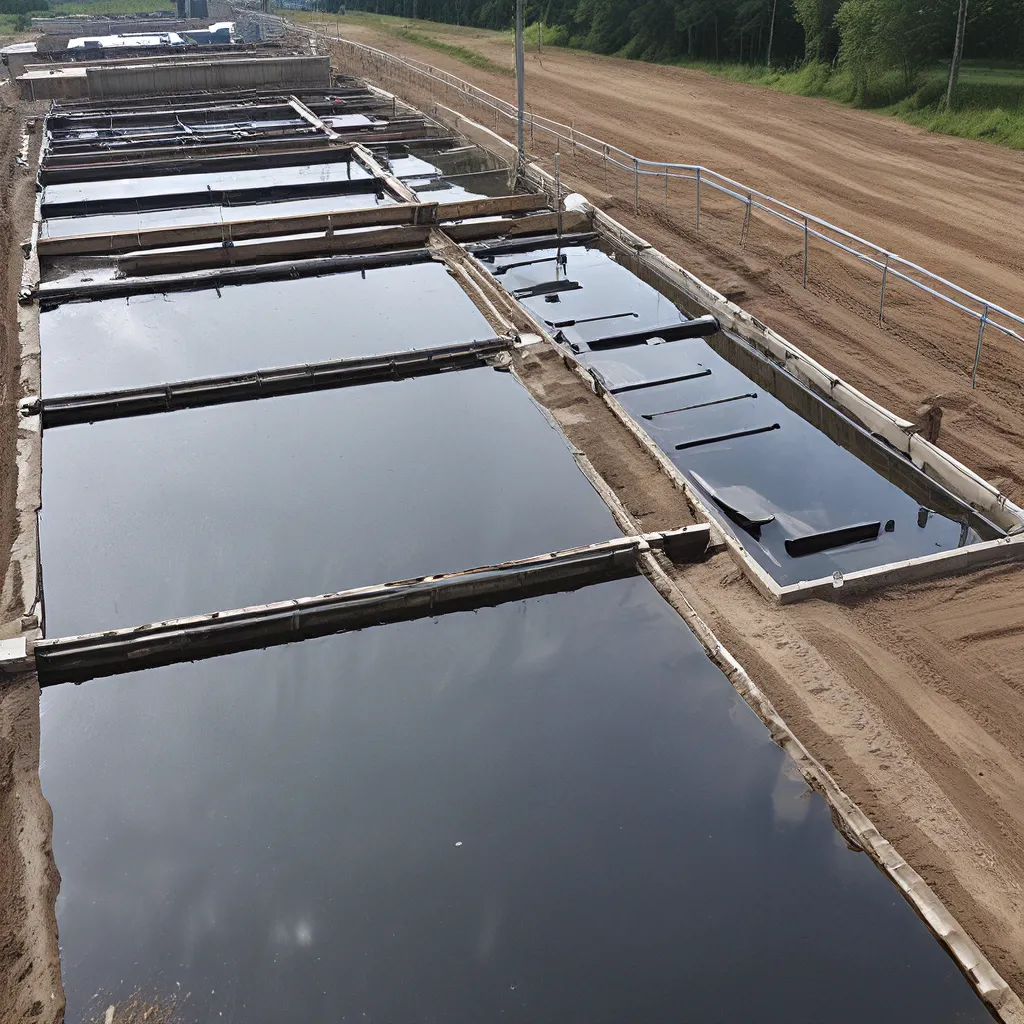
Ah, the wondrous world of constructed wetlands – where Mother Nature and human ingenuity come together to tackle one of our most pressing environmental challenges. As someone deeply fascinated by the intersection of technology and the natural world, I simply can’t wait to dive into this topic and unravel its intriguing complexities.
From Swamps to Saviors: The Rise of Constructed Wetlands
Let me take you on a journey back in time, when the concept of constructed wetlands was still a relative newcomer in the realm of wastewater treatment. Believe it or not, these ingenious systems were once viewed as little more than glorified “swamps” – areas of land that were deemed worthless and expendable. But oh, how the tides have turned!
Today, constructed wetlands are making waves (pun intended) across the globe, as communities and industries alike recognize their incredible potential to tackle a wide range of water quality challenges. And the best part? They do it all while harnessing the power of nature’s own processes, like the ability of wetland vegetation, soils, and microorganisms to improve water quality.
Decoding the Magic: How Constructed Wetlands Work
Alright, let’s get down to the nitty-gritty. What exactly is it that makes constructed wetlands so special? Well, my friends, it all comes down to the natural processes that occur in these engineered systems.
Picture this: You have a body of water, be it wastewater, stormwater runoff, or even mine drainage, and you want to clean it up. Instead of relying on energy-intensive, high-tech solutions, you turn to the humble wetland. Here, the water moves slowly through the system, allowing sediments to settle and a diverse community of microorganisms to work their magic.
These microbes, along with the lush vegetation that thrives in the wetland environment, are the real MVPs when it comes to breaking down a wide range of pollutants – from organic matter and nutrients to heavy metals and pathogens. It’s a true symphony of biological, chemical, and physical processes all working together to improve water quality.
Constructed Wetlands: The Versatile Wastewater Warriors
But the beauty of constructed wetlands doesn’t stop there. These systems are remarkably versatile, capable of tackling a vast array of wastewater challenges. From municipal effluent and industrial wastewater to agricultural runoff and landfill leachate, constructed wetlands have proven themselves to be the Swiss Army knives of the water treatment world.
And the best part? They’re not just efficient; they’re also cost-effective. Compared to the concrete and steel of traditional wastewater treatment plants, constructed wetlands can often be built at a much lower price tag. Plus, with their low-maintenance requirements and minimal energy demands, the long-term operating costs are usually a fraction of their traditional counterparts.
But wait, there’s more! Constructed wetlands don’t just clean the water; they also have the potential to create wildlife habitats and serve as educational and recreational hubs for the surrounding community. Talk about a win-win-win situation!
Tackling the Challenges: Navigating the Regulatory Landscape
Of course, with any innovative technology, there are always some hurdles to overcome. In the case of constructed wetlands, one of the key challenges lies in the regulatory realm.
You see, these natural-looking systems don’t always fit neatly into the traditional wastewater treatment box. Regulators, understandably, want to ensure that public health and safety are prioritized, but sometimes their well-intentioned rules can inadvertently hinder the progress of constructed wetlands.
But fear not, my friends, for there are teams of dedicated experts working tirelessly to bridge this gap. At the state and federal levels, initiatives are underway to identify and address the regulatory barriers that may be slowing the adoption of constructed wetlands. And by bringing together regulators, engineers, and environmental advocates, they’re finding creative solutions to ensure these natural-based systems can thrive.
Exploring the Cutting Edge: The Future of Constructed Wetlands
As exciting as the current state of constructed wetlands may be, the real magic lies in what’s to come. You see, this field is constantly evolving, with researchers and innovators pushing the boundaries of what these systems can achieve.
Take, for instance, the realm of phytoremediation – the use of plants to remove or neutralize contaminants. Experts are exploring the potential of various plant species to remediate everything from radioactive materials to heavy metals. And who knows what other wonders these natural marvels might uncover?
But it’s not just about the technical side of things. Constructed wetlands are also redefining our relationship with wastewater, transforming it from a “waste” product into a valuable resource. As more communities and industries begin to see the potential for water reuse, these systems are poised to play an increasingly crucial role in the quest for sustainable water management.
Embracing the Future: A Call to Action
So, my friends, what’s the takeaway here? Simply put, constructed wetlands are the future of wastewater treatment – a shining example of how we can harness the power of nature to tackle our most pressing environmental challenges.
And you know what they say, “The future is ours to shape.” So, I encourage you to explore the possibilities of constructed wetlands, whether you’re an engineer, a policymaker, or simply a curious citizen. Visit our website at AlphaWastewater.com to learn more about how we’re leading the charge in this exciting field.
Who knows, maybe one day, the humble wetland will be celebrated not just for its beauty, but for its power to transform the way we think about and manage our most precious resource – water.